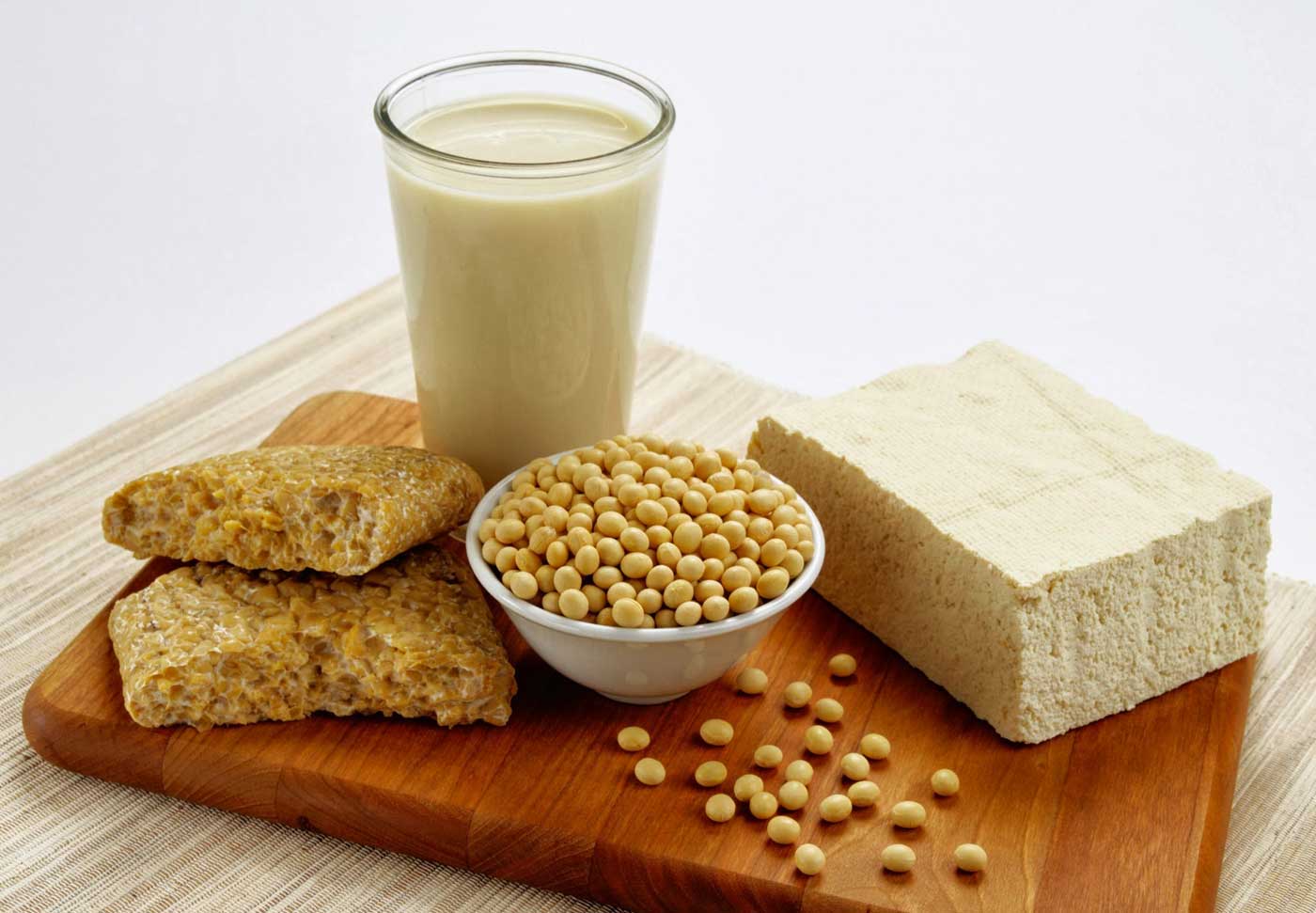Large scale cultivation of the soybean in the United States began only after the Second World War, and quickly rose to 140 billion pounds per year. Most of the crop is made into animal feed, soy oil for hydrogenated fats, margarine and shortening.
During the past 20 years, the industry has concentrated on finding markets for the by-products of soy oil manufacture, including soy ‘lecithin’, made from the oil sludge, and soy protein products, made from defatted soy flakes, a challenge that has involved overcoming consumer resistance to soy products, generally considered tasteless ‘poverty’ foods.
“The quickest way to gain product acceptability in the less affluent society,” said a soy industry spokesman, “is to have the product consumed on its own merit in a more affluent society”, hence the proliferation of soy products resembling traditional American foods: Soy milk for cow’s milk, soy baby formula, soy yogurt, soy ice cream, soy cheese, soy flour for baking and textured soy protein as meat substitutes, usually promoted as high protein, low-fat, no cholesterol “health foods” to the upscale consumer increasingly concerned about his health. The growth of vegetarianism among the more affluent classes has greatly accelerated the acceptability and use of these artificial products. Unfortunately they pose numerous dangers.
Processing De-natures and the Dangers Remain
The production of soy milk is relatively simple. In order to remove as much of the trypsin inhibitor content as possible, the beans are first soaked in an alkaline solution. The pureed solution is then heated to about 115 degrees Centigrade in a pressure cooker. This method destroys most (but not all) of the anti-nutrients but has the unhappy side effect of so denaturing the proteins that they become very difficult to digest and much reduced in effectiveness.
The phytate content remains in soy milk and blocks the uptake of essential minerals. In addition, the alkaline soaking solution produces a carcinogen, lysinealine and reduces the cysteine content, which is already low in the soybean. Lacking cysteine, the entire protein complex of the soybean becomes useless unless the diet is fortified with cysteine-rich meat, eggs, or dairy products. This leaves vegetarians vulnerable.
Most soy products that imitate traditional American food items, including baby formulas and some brands of soy milk, are made with soy protein isolate. That is the soy protein isolated from the carbohydrate and fatty acid components that naturally occur in the bean. Soy beans are first ground and subjected to high-temperature and solvent extraction processes to remove the oils. The resultant defatted meal is then mixed with an alkaline solution and sugars in a separation process to remove fibre. Then it is precipitated and separated using an acid wash. Finally the resultant curds are neutralized in an alkaline solution and spray dried at high temperatures to produce high protein powder.
This is a highly refined product in which both vitamin and protein quality are compromised.
But some trypsin inhibitors remain, even after such extreme refining. Trypsin inhibitor content of soy protein isolate can vary as much as 5-fold.
In rats, even low level trypsin inhibitor soy protein isolate feeding results in reduced weight gain compared to controls.
Soy product producers are not required to state trypsin inhibitor content on labels, or even to meet minimum standards, and the public, trained to avoid dietary cholesterol, a substance vital for normal growth and metabolism, has never heard of the potent anti-nutrients found in cholesterol-free soy products.

